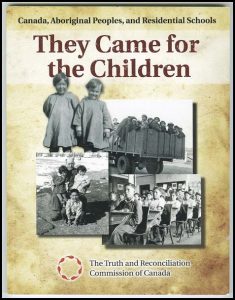While researching my research project for digital storytelling I stumbled across this article Designing a model of culturally responsive mathematics education: place, relationships and storywork by Cynthia Nicol, Jo-ann Archibald and Jeff Baker. I was instantly intrigued for within my own classroom I struggle to incorporate relevant mathematical concepts from a First Nations perspective. I found this study fascinating as it occurred over 3 years, with 7 participants (3 First Nations ancestry) in a “small rural school district” (p 76) in the Pacific Northwest, British Columbia who met for full days every “four to eight weeks throughout the school year” (p 78). I believe that kind of support would be invaluable when learning to incorporate culturally responsive pedagogy into your practice. Since culturally responsive education (CRE) “cannot be approached as a recipe or series of steps that a teacher can follow” (p 76), the researchers drew upon “Archibald’s (2008) Indigenous storywork theoretical framework (p 77) and “participatory action research” (p 77) in which curriculum is developed within collaboration from involved parties as well as community members (p 77). Over the course of the study the participants developed collective projects and individual projects. Working with stories teachers and community members were able to develop mathematical and cultural investigations and example is using Raven Brings the Light students compared “surface areas and volumes of nested boxes, building nested boxes from paper, exploring the concept of transformation and shape-shifting from a mathematical sense and cultural sense” (p 80). The project determined the following aspects for CRE:
- Place- based education: ideas are grounded “to the cultural environment which students and schools are situated” (p 82)
- Storywork: cultural stories, legends and art (considered written language) draw context for teaching and learning mathematics (p 83)
- Focused on relationships: teachers need to forge relationships with their students, parents and the community
- Inquiry based: “inquiry based mathematics provided opportunities to use mathematics to help students make sense of local issues” (p 84).
- Requiring social consciousness and personal/collective agency: “commitment to transform mathematics teaching and learning” (p 85)
The big takeaway from the article for me was to become a more culturally responsive teacher a teacher needs to be committed to transforming their practice by using the ideas presented and it can be sustained through support with other educators, parents, and community members. Knowing every Indigenous community is different culturally responsive education will look different in every community I would like to research how to incorporate culturally responsive education within my school.
Nicol, C., Archibald, J., & Baker, J. (2013). Designing a model of culturally responsive mathematics education: Place, relationships and storywork. Mathematics Education Research Journal, 25(1), 73-89. doi:10.1007/s13394-012-0062-3
 Secret of the Dance is a fictional childrens literature story based on an incident which happened in Elder Alfred Scow’s life. The story explains the challenges faced by Aboriginal people when the Canadian government passed a law forbidding cultural ceremonies. The book enhances classroom discussions on Indigenous “ceremonial and spiritual aspects of traditional education, and the relationship with the land” (p. 18, Indian Residential Schools & Reconciliation Teacher Resource 5), Indian agents, and “the restrictive laws of the Indian Act that were imposed on First Nations people”(p. 18, Indian Residential Schools & Reconciliation Teacher Resource 5). The beautiful illustrations complement and showcase First Nations art.
Secret of the Dance is a fictional childrens literature story based on an incident which happened in Elder Alfred Scow’s life. The story explains the challenges faced by Aboriginal people when the Canadian government passed a law forbidding cultural ceremonies. The book enhances classroom discussions on Indigenous “ceremonial and spiritual aspects of traditional education, and the relationship with the land” (p. 18, Indian Residential Schools & Reconciliation Teacher Resource 5), Indian agents, and “the restrictive laws of the Indian Act that were imposed on First Nations people”(p. 18, Indian Residential Schools & Reconciliation Teacher Resource 5). The beautiful illustrations complement and showcase First Nations art.

 The book Stoney Creek Woman written by Bridget Moran tells the story of Mary John an Elder from my reservation. The book details Mary John’s life and provides readers with a mirror into the life of a Native woman living in rural northern British Columbia. Mary John was awarded the Order of Canada in 1997 and after reading the book people will understand why. I also enjoy reading the book as my grandmother is mentioned in it.
The book Stoney Creek Woman written by Bridget Moran tells the story of Mary John an Elder from my reservation. The book details Mary John’s life and provides readers with a mirror into the life of a Native woman living in rural northern British Columbia. Mary John was awarded the Order of Canada in 1997 and after reading the book people will understand why. I also enjoy reading the book as my grandmother is mentioned in it.